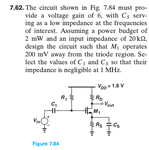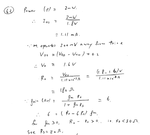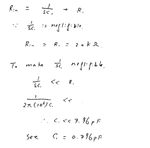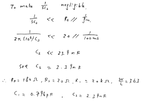MahmoudHassan
Full Member level 6
Dear All
I am attaching problem from razavi book I thought it should be a simple common source with gain of gm (RD//ro) as the current source connected to the source of MOS is bypassed by a capacitor so it should be shorted in AC analysis. But in solution manual he didn't bypass it !!!!
I don't know why? I think he is wrong but I want to make sure
attached problem and solution

Solution
1

2

3

4

Best Regards
I am attaching problem from razavi book I thought it should be a simple common source with gain of gm (RD//ro) as the current source connected to the source of MOS is bypassed by a capacitor so it should be shorted in AC analysis. But in solution manual he didn't bypass it !!!!
I don't know why? I think he is wrong but I want to make sure
attached problem and solution

Solution
1

2

3

4

Best Regards